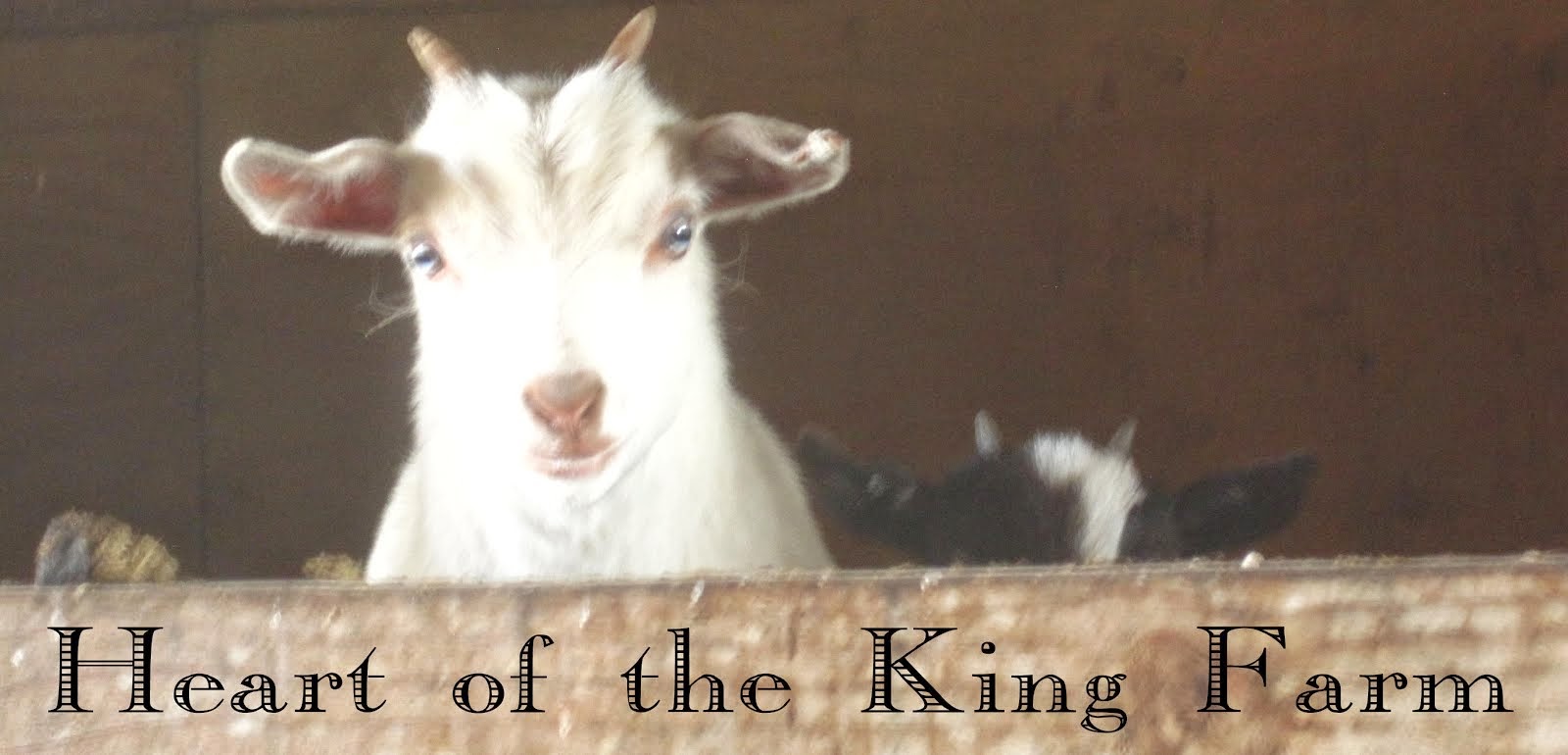(List of Notes at bottom of post)
So we've been watching this gal for weeks.
And we've noticed many of the signs of impending labor:
Her udder bagged up about two weeks ago.
(They can "bag up" or fill up with milk anywhere from a month to seconds before labor)
Her belly started dropping.
(They carry the kids up high for most of the pregnancy, then drop 'em lower a couple days before labor. You know this has happened when you start to see a sunken area above the baby bulge.)
Her ligaments were loosening.
(Any guide to goat labor will tell you ALLLL about how the tail ligaments disappear.)
But nothing happened. For days.
When I checked on her and all the other goats this morning, it was business as usual. Grazing, resting in the shade, no babies. Darn. Maybe tomorrow?
Around noontime we get a call from our uncle who was doing some work from us.
There's a baby in our pasture!!! Yay!!!
I immediately run outside, straight for the pasture. Barefoot, through the bee-filled clover, up over the fence, through the sticker weeds. Yup. I should've thought that through. But I was so excited to meet the new baby.
When I first came upon the two, I was a bit worried. I didn't realize she had just had this kid. He was still slimy, his cord wrapped around his back a little, and Dolly (mama) was barely cleaning up.
Last year, her first freshening, she wasn't the best of moms. She hardly let her twins nurse (one of them adopted a different doe as her mom. lol) and was awful on the milk stand. Last year, I had to help the kids to their first colostrum and even carry to her the kid that she walked off and left right after birth.
Ugh. First fresheners.
So, I was skeptical. …Okay, worried!
But instead, she was amazing. Fabulous. Redeemed.
Upon my arrival, Dolly immediately went about chewing away the cord and eating the rest of the slime. She talked to little Felix the whole time. It's really sweet the way the mumble and chatter to the kids.
Silly Felix, though. Within the first few hours of his life, as we observed him, Felix has already shown a great deal of personality! He's a bold little dude, if a bit confused. He spent a good five minutes pecking at his mom's chest and trying to nurse her collar before he found her teat. He hobbles around, but is sturdier at this point than any other kid we've had.
About an hour after first finding him, I went back out to see how he was doing. We like to give mom and kid plenty of bonding time, so we check up periodically and try not to get in the way too much. Which is hard to do. I mean, really, really hard.
When I went out this second time, I sat criss-cross-applesauce beside the two. Felix was already hobbling to and fro, learning how to use his legs. He comes up to me and I pet his little head. Next thing I know, he climbs into my lap and starts trying to nurse my fingers, my shirt, whatever he can get his little mouth on!
Such silly goats.
So, about those notes, right?
- You may have noticed I never mentioned dipping the cord, wiping down the kid, or helping him find the teat. At Heart of the King farm, we "assist" as little as possible and only as much as necessary. We feel it only makes sense to allow nature to do as nature does, and it is in the doe's nature to take care of her baby in all those ways. Granted, if a kid or mom does have issues, we will address them. We aren't negligent.
- Waiting for your goat to kid is painful. You can't wait to see it, hold it, pet it's little nose. But you have to, and it's hard.
- And it's only made worse by all the differentiating signs of labor. Some are obvious and mean within a couple day (those I wrote out at the top). Those that mean very soon can be a lot harder to understand. Some goats get super friendly or noisy as they go into labor. Others get quiet and go off to themselves. Some never give any distinguishable sign.
- That means you may walk outside to a new set kids, or sit and wait while your goat tells you all about what's going on, but at least you're there and can help if things go awry.
- If things do go awry, this link explains basically any version of awry and can help.
- Once the kid(s) are born, all you really need to do is make sure their cord isn't dragging on the ground as they walk, and make sure they get milk. You'll know if anything else is wrong. It will be obvious.
So, that's it!
-Katie
















